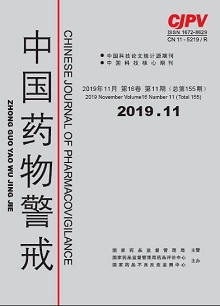|
|
Investigation of Pharmaceutical Manufacturers’ Ability of Direct Reporting of Drug Adverse Reactions
WANG Dan, LI Xinling, DONG Duo, XIONG Weiyi, LIU Cuili, ZHU Lan, GENG Fengying, LIAO Jianbo, YANG Yueming, LAN Shan, LV Xiaoqin, WANG Tongchun, ZHAO Xia, WANG Wen
2019, 16(11):
654-661.
DOI: 10.19803/j.1672-8629.2019.11.03
Objective To investigate the status quo of and existing problems with ADR monitoring in the pharmaceutical industry in China, so as to propose measures to improve the ADR reporting ability of manufacturers.Methods Personnel interviews and questionnaires were used. Personnel interviews were conducted in the form of symposiums and on-the-spot investigation, using qualitative analysis Method. Questionnaire surveys were conducted among more than 1 000 manufacturers in 16 provinces, using qualitative analysis Method.Results There were many problems with the construction of ADR monitoring systems as well as with the collection, reporting, analysis and evaluation, and control of ADRs by drug manufacturers. Technical supervision and administrative supervision needed to be improved.Conclusion Drug manufacturers, ADR monitoring centers and drug regulatory authorities should implement the Notice of the NMPA on Direct Reporting Adverse Reactions by MAHs to the letter so as to improve the awareness of safety and the level of ADR monitoring in the pharmaceutical industry as a whole.
References |
Related Articles |
Metrics
|
